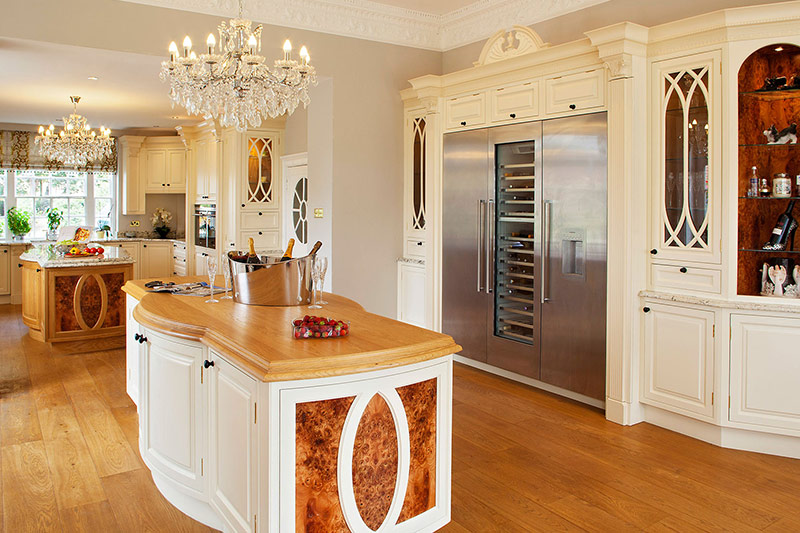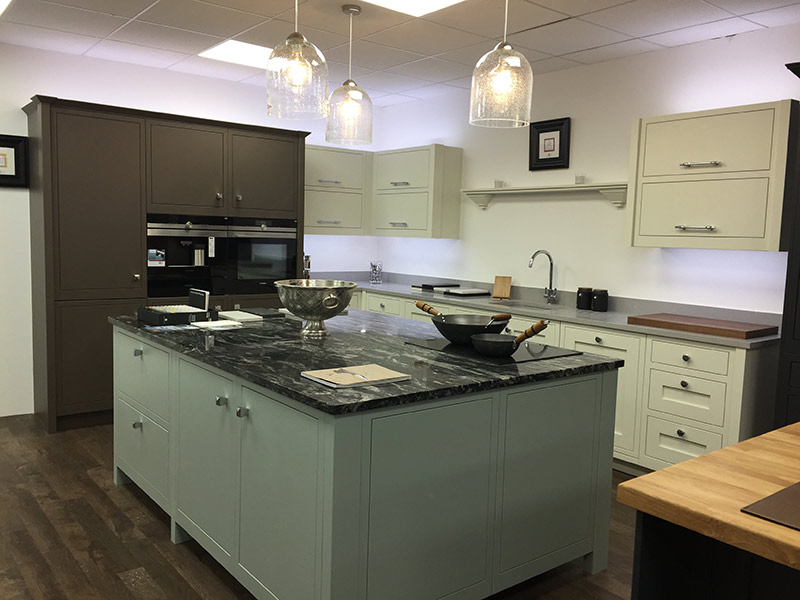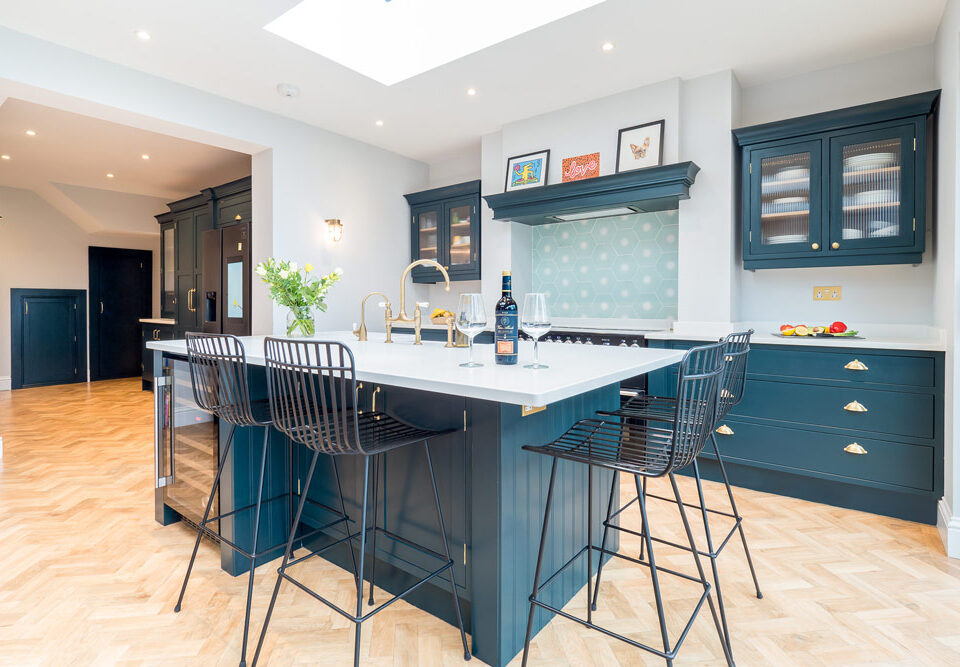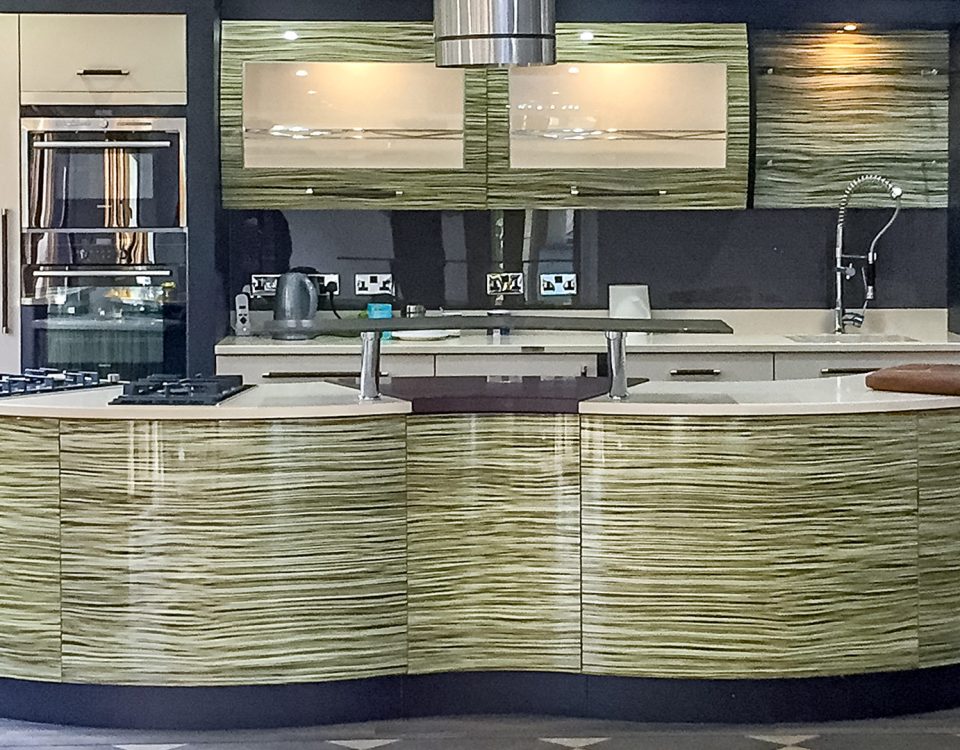
Traditional British Craftsmanship Contemporary Design
7th March 2016
Shaker Kitchen design
24th January 2018All too often, we in Britain want everything to colour match when planning a beautiful new kitchen. So we choose worktops that match with the chosen door finish. We then pick out our floor and wall coverings to complement our kitchen choice. We then shop around for matching curtains and blinds. When all is said and done we end up with our perfect kitchen, right? well… um… sort of…
What you could actually end up with more often than not, is all the features looking pretty much the same. For example, you may have chosen a cream hand-painted kitchen – so you think you’ll pick a matching cream based wallpaper, flooring with matching cream; the end result – the whole room, including the kitchen furniture just looks, well… totally cream.
One must remember that the world is full of contrasts. We can see in nature where a natural mix of colours work, and those which do not. For example we all love to look at magnificent sunrises and sunsets with the wide range of reds, blues, orange, yellows and purples – as opposed to gloomy cloudy days where all the shades of grey smudge together.
This is why Dulux recently encouraged customers to be more bold with colours and advised on which work well together and which do not. If you choose to commission a hand-painted kitchen you have the advantage that it can be repainted at any time in the future to a new colour scheme.
 Using RAL charts like the one on the left can help you decide on colours but you can also give the RAL numbers to us and we will match the paint exactly when we make bespoke hand-painted kitchens.
Using RAL charts like the one on the left can help you decide on colours but you can also give the RAL numbers to us and we will match the paint exactly when we make bespoke hand-painted kitchens.
Designers and artists use a colour wheel to decide which colours and shades go together and contrast against each another (see image at the top).
Here we explain the colour wheel and how it can be used to make complimentary schemes:
Primary Colours
Red, yellow and blue are the three primary colours. They are at equal intervals on the wheel, and all other colours are made up from a combination of these three. They are base colours and cannot be created by combining others.
Secondary Colours
Secondary colours are formed when two of the primary colours are mixed together. The secondaries are in between each primary on a wheel.
Tertiary Colours
When a primary colour is mixed with the secondary colour next to it on the wheel – you get a tertiary colour.
Complementary Colours
Complementary, or nicely contrasting colours lie directly opposite one another on a wheel. Use two complementary colours sparingly though, otherwise they could be too dominating.
Tints
Paint charts typically include tints and shades of the above mentioned main colours. Tints are created by the addition of white to a colour in infinite proportions to make infinite lighter tints.
Shades
Shades are created by the addition of black to a colour in infinite proportions to make infinite darker shades.
Combining Colours and Shades
Tints and shades are a great way to help decide on an harmonious and complimentary range of tones based on one scheme. Black, white and greys are a “lack of colour” but can be used to good effect with any scheme. A frequent design idea in choosing a scheme is to pick one colour from the wheel, then use the colours either side for accenting.
Don’t forget to consider the colour or shades of certain pieces of furniture that will definitely be in the room before choosing a colour scheme. Can they be painted to match your new scheme or is that not possible or necessary?
And finally, remember that different colours create different moods – there are warm colours and cool colours, and some shades make a room appear to look bigger or smaller, etc.





